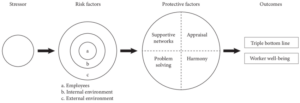Chapter 6: Failing Successfully
Overview
Learning how to fail successfully is almost an art form. Especially with technology involved, failure is a very real possibility. Address your concerns early and develop solutions for overcoming them. It is very likely something will not proceed according to plan. Remember, this is not a reflection on you: it happens! Thankfully, design thinking addresses some of these concerns, releasing us from the traditional, rigid mindset which says failure is not an option. Before jumping into resilience models and strategies for managing and overcoming failure, let’s discuss some myths and inspirational role models for failure.
Myths and Inspiration
Resilience Models
Resilience is what occurs after challenges, adversity, or failures. Resilience occurs when there is a positive mindset, social supports, and effective coping mechanisms. Resilience models (also called growth mindsets) are a good way to identify strategies to mitigate risk factors, through the use of protective factors. It will improve outcomes as well as worker well-being. Review the image below to learn more about the Resilient Workplace Model (Van Breda, 2011).

Obstacle Management
In Bill Wooditch’s book: Fail More: Embrace, Learn, and Adapt to Failure as a Way to Success (2019), he shares some quick strategies for managing your obstacles and therefore overcoming the fear of failure, real or imagined:
- Change your mindset. Accept the changes, failure, and obstacles, willingly. “Intelligent risks” (Wooditch, 2019) promotes skill-building and pushes us beyond our limits. Anything worth creating will likely have some challenges to face. It’s part of the game.
- Zoom out for the bigger picture. It is easy to become very invested in a project and too focused on the finer details. Taking the time to detach the emotion from the project and tasks can provide a new perspective and highlight areas for improvement, change, or even new directions.
- Avoiding failure or obstacles does not change its existence. It is unavoidable. There will be problems, elements which will try to prevent you from succeed. Dealing with them at the start and preparing for those obstacles will promote success. Social supports, resources, and other strategies are effective ways to manage your obstacles.
Other noteworthy elements to consider (Wooditch, 2019):
- Praise effort, not talent.
- Commit to continuous improvement.
- Interpret challenges as opportunities instead of threats.
- Again: failure is not a reflection on you.
References
Wooditch, Bill. 2019. “Break Through the Obstacles That Limit Success.” Chap. 4 in Fail More: Embrace, Learn, and Adapt to Failure as a Way to Success. 1st ed. New York: McGraw-Hill Education. https://www-accessengineeringlibrary-com.tuproxy.palni.edu/content/book/9781260441512/chapter/chapter4

